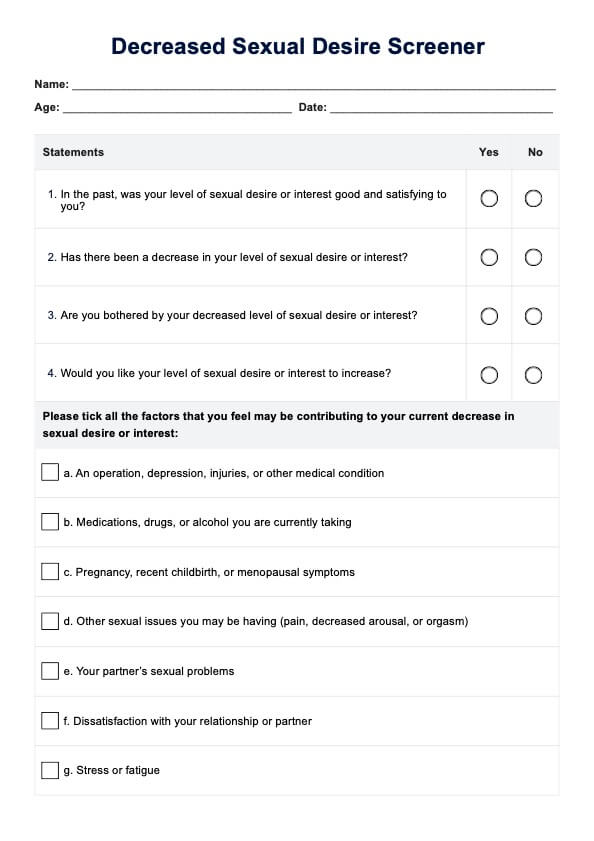The Decreased Sexual Desire Screener (DSDS) is a validated diagnostic tool consisting of five questions designed to assess decreased sexual desire and its associated distress in women, aiding in the diagnosis of hypoactive sexual desire disorder (HSDD). However, it should not be used with postmenopausal women as it was not designed for them.

Decreased Sexual Desire Screener
Learn how to use the Decreased Sexual Desire Screener (DSDS) to diagnose Hypoactive Sexual Desire Disorder (HSDD) in premenopausal women.
Decreased Sexual Desire Screener Template
Commonly asked questions
Low sexual desire is characterized by a marked reduction in sexual interest or desire that persists over time, causing significant distress or interpersonal difficulties, and is not attributable to other medical or psychological conditions.
The diagnostic criteria for hypoactive sexual desire disorder in the DSM-IV included a persistent or recurrent lack of sexual desire, causing marked distress or interpersonal difficulty, and not due to a coexisting medical or psychiatric condition, relationship problems, or the effects of a substance. However, these are from the DSM-IV, which was superseded by DSM-5 in 2013.
EHR and practice management software
Get started for free
*No credit card required
Free
$0/usd
Unlimited clients
Telehealth
1GB of storage
Client portal text
Automated billing and online payments











